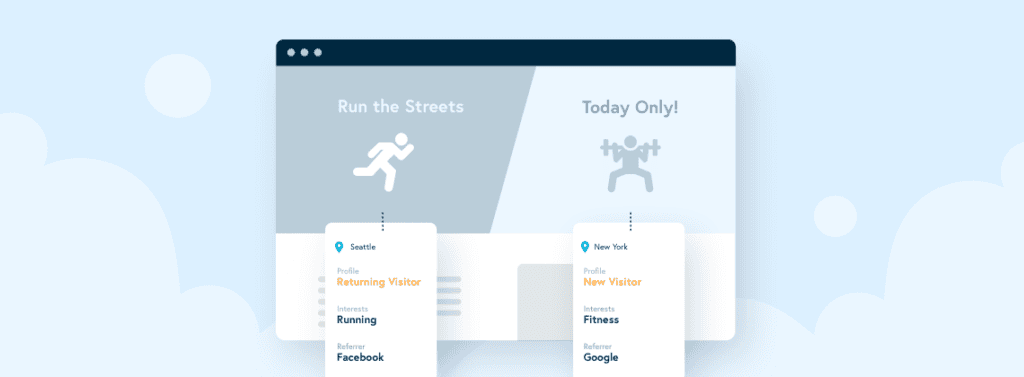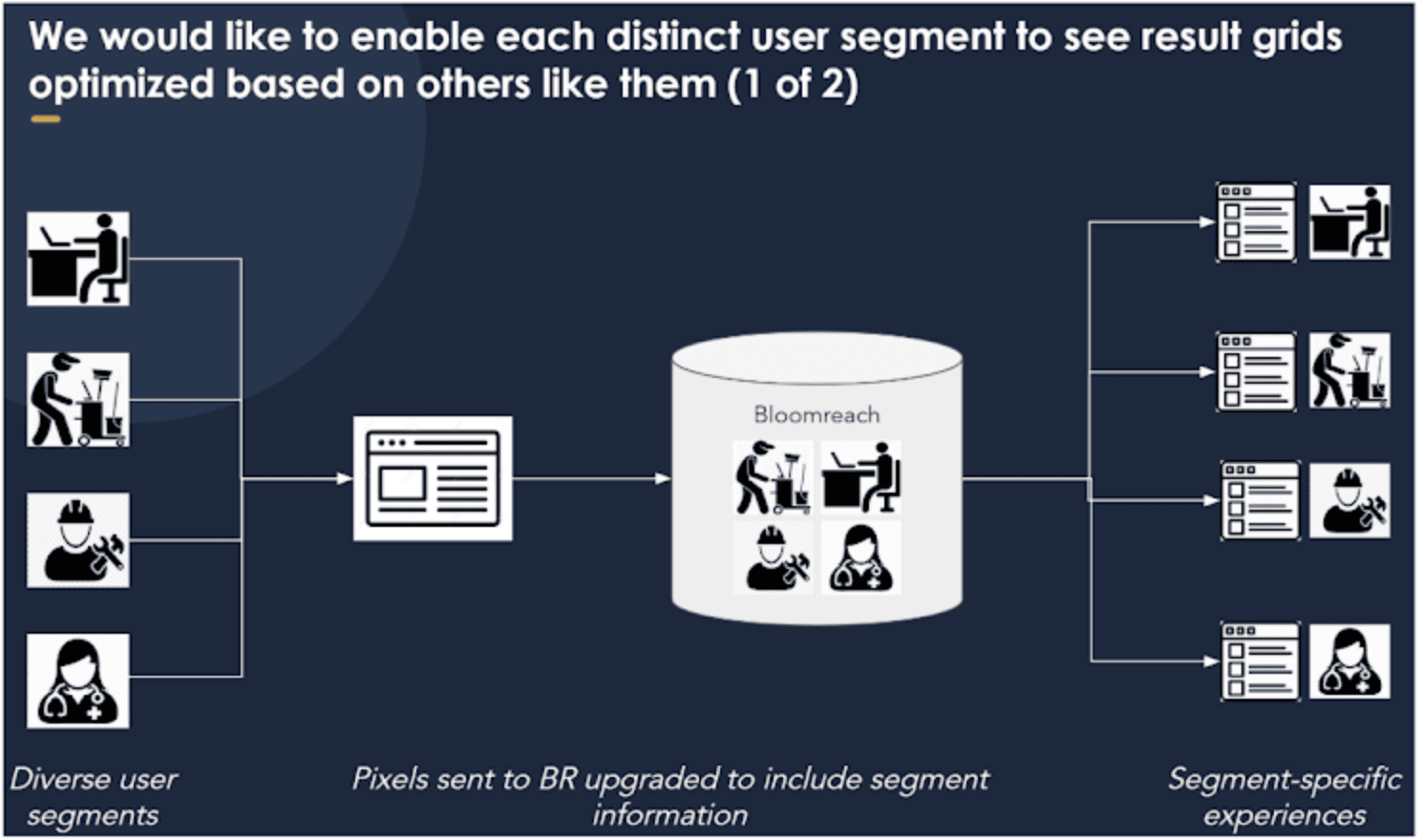In the last 20 years, every digital business and ecommerce company has been chasing the dream of personalization and optimization. The reality is that there are not that many personalization projects that truly live up to the promise, especially in search or browse. Why? Historical personalization systems have come to rely on two fundamental methods:
-
Targeting: Targeting works well when you have a simple set of rules you can apply to an audience and you know which rules work. You also have to know which content to show to which audience. That gets really difficult when you’re talking about product assortments of 100’s, 1000’s or even millions of products. How do you know what to show to whom? Targeting breaks down when your products and content grows.
- 1:1 Personalization: 1:1 personalization in commerce is powerful in situations where you have a rich set of data about customers and as a result of that can significantly change the products you show to that individual. Both of those conditions don’t always hold when it comes to the search and browse experience. Often, customers visit infrequently and most of the time, it is hard to have enough variation in the product set to change the results. Due to a lack of data, 1:1 personalization can be challenging for a large majority of companies to do well.
That’s why we’re delighted to roll out a new feature – Relevance by Segment.
Relevance by Segment enables Bloomreach to collect data about the different segments of users on your site. This data is then leveraged to optimize the product ranking based on the preferences of all of the users within a specific segment.
In other words, as soon as Bloomreach is provided with customer segments, it will collect data on that segment, and then every person or customer in that segment will benefit from the learnings from the rest of the group.
Relevance by Segment solves the need to be constantly writing rules and overcomes the small sample size.
On the one hand, because Bloomreach automatically adjusts the ranking for each segment – it’s highly scalable.
Second, compared to 1:1 personalization, we are working with segments that have enough density of data, the algorithms can go to work to create diverse experiences – and that’s the key for personalization to drive lift. This works best where the behavior/preferences of multiple buyers are more diverse. This is where personalization adds the most value.
Why is Relevance by Segment better than regular-old targeting?
Segmented search results (i.e. you target a certain persona to then make sure that you can boost products for that persona) are common today. The big difference between targeting and Relevance by Segment is that Bloomreach dynamically computes the ranking function for all members of that cohort/segment so that we uniquely match performance optimization (revenue & other KPIs) with query-specific behavior that is specific to the segment. In essence, that means you get a revenue optimized function per industry or role or any other segment you specify.
It delivers a better user experience and has the potential to drive more revenue. From initial A/B tests conducted on this feature, a B2B customer saw ~5% RPV lift and B2C customer saw ~10% RPV lift by using this feature. Of course, Bloomreach can’t guarantee these increases of RPV for every site, but initial tests look promising.
This is more than a feature, it is the key to scalable personalization that works. It will lead to a better user experience, faster conversion and ultimately higher revenue. If you’d like to learn more about Relevance by Segment, head over to the documentation or reach out for a demo.














